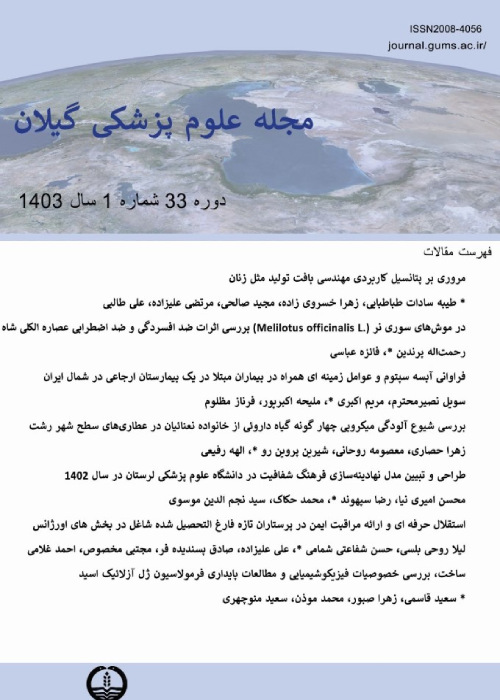Survey of Predictive Factors on Brushing Behavior According to the Three Main Motivational Constructs Among Female Students of Primary Schools
Author(s):
Abstract:
Introduction
Although children’s dental health has generally improved over recent decades, yet, dental problems has a high prevalence during childhood. Three main constructs perceived benefits, perceived barriers and perceived self-efficacy are the major motivational constructs because of helping people to shape a positive behavioral history for the future by focusing on the benefits of a behavior, teaching how to overcome barriers to carrying out the behavior, and engendering high levels of self-efficacy. Objective
Determining the predictive power of three main constructs perceived benefits, perceived barriers and perceived self-efficacy in brushing behavior among primary schools female students in Rasht city Materials And Methods
This cross sectional study was conducted on female students of grade four in Rasht in 2012. According to the statistical estimation and systematic sampling method, the number of samples and schools were 265 and 22, respectively. From each school about 12 students were selected with simple randomized sampling. The measuring tool was a questionnaire. Data were analyzed using descriptive methods, and analytical methods like Chi2, Mann-Whitney U test and Logistic regression. Results
As shown, 17.4% of the students brush at least twice a day. The logistic regression analysis indicated that perceived barriers (OR=1.73, 95%CI=1.07-2.79, P=0.024) and mother’s educational level (OR=5.31, 95%CI=1.41-20.0, P=0.014) were the significant predicting factors for tooth brushing twice a day or more. According to the Mann-Whitney U test, perceived barriers, perceived self-efficacy and along with Chi2 test, mother’s educational level were significant factors (P<0.0001). There was also a significant difference between fatigue, laziness and impatience with brushing at least twice a day (P<0.0001). Conclusion
The educational intervention programs to promoting brushing behavior in this age group should focus on overcoming the barriers particularly on the three above-named barriers. Promoting the educational level of mothers and planning the educational programs for them in this field are recommended as well. As perceived self-efficacy has statistical significant difference with regular brushing behavior, it has no power to predict behavior. This finding could be supported by Piaget’s Theory of Cognitive Development, according to which children during the concrete operational stage still have difficulties with abstract termsKeywords:
Language:
Persian
Published:
Journal Of Guilan University Of Medical Sciences, Volume:23 Issue: 91, 2014
Pages:
16 to 22
magiran.com/p1314468
دانلود و مطالعه متن این مقاله با یکی از روشهای زیر امکان پذیر است:
اشتراک شخصی
با عضویت و پرداخت آنلاین حق اشتراک یکساله به مبلغ 1,390,000ريال میتوانید 70 عنوان مطلب دانلود کنید!
اشتراک سازمانی
به کتابخانه دانشگاه یا محل کار خود پیشنهاد کنید تا اشتراک سازمانی این پایگاه را برای دسترسی نامحدود همه کاربران به متن مطالب تهیه نمایند!
توجه!
- حق عضویت دریافتی صرف حمایت از نشریات عضو و نگهداری، تکمیل و توسعه مگیران میشود.
- پرداخت حق اشتراک و دانلود مقالات اجازه بازنشر آن در سایر رسانههای چاپی و دیجیتال را به کاربر نمیدهد.
In order to view content subscription is required
Personal subscription
Subscribe magiran.com for 70 € euros via PayPal and download 70 articles during a year.
Organization subscription
Please contact us to subscribe your university or library for unlimited access!


